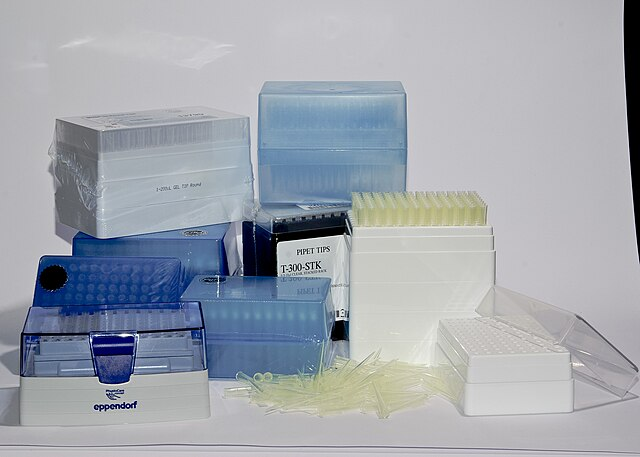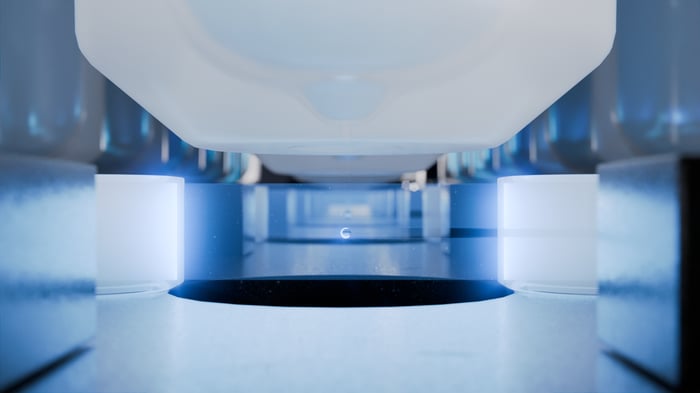Automated pipetting machines or non-contact liquid handlers offer researchers a simple way to achieve speed and accuracy across core workflows. These robotic devices accurately and efficiently transfer and dispense liquids for different applications, reducing errors and saving time. The alternative to automated pipetting machines or liquid handlers is manual pipetting, a tedious, expensive, and slow process that is prone to errors and prevents researchers from scaling up their work effectively.
This article explores how automated pipetting machines and and semi-automated liquid handling overcome these limitations, relieving scientists from the burden of arduous pipetting tasks, saving them time and money, and allowing them to remain competitive in a field where automation is quickly becoming the norm.
Enhancing Accuracy and Reproducibility
The work of a scientist is challenging enough without being forced to rely on outdated technologies. Manual pipettes play a vital role in many workflows but are prone to errors that put experiments and projects at risk (Fig. 1).

Figure 1. Manual pipetting tasks consume mountains of tips and hours of researchers' time, making them a slow and error-prone way to approach modern research applications. (Source)
Variability creeps into manual pipetting even when performed by seasoned researchers and contributes to a lack of reproducibility both within and between laboratories1,2. Lack of reproducible results is endemic in academic research and slows our progress toward important discoveries and cures for diseases3,4. Automated pipetting machines and non-contact liquid handlers like the I.DOT remove operator variability from the equation, fostering reproducibility and transparency even with the most complex tasks5. Programmable systems allow researchers to perform pipetting tasks with consistent precision, regardless of time intervals or operator changes.
Increasing Throughput and Efficiency
Many biological workflows require the simultaneous processing of many samples. Researchers must be able to handle the volume of samples while ensuring that each is processed accurately and consistently. There is ongoing pressure to produce results quickly in research and clinical settings, where the accuracy of analytical tests directly impacts patient outcomes. However, with manual pipetting, researchers may be forced to sacrifice efficiency for accuracy and vice versa. Lab automation gives researchers the best of both worlds, achieving uncompromising scalability and accuracy.
This capacity is vital in high-throughput applications that demand precision, such as PCR or ELISA preparations6,7. Automation enables researchers to process multiple samples simultaneously while ensuring consistent and precise handling. It improves result reliability and reduces the challenges associated with using inefficient tools.
Reducing Contamination Risks
Biological experiments are prone to contamination from many sources8–10. Molecular techniques typically involve pipetting tiny volumes of transparent solutions that look identical but contain vastly different molecules. Adding the wrong reagent to a single well can compromise an entire experiment and jeopardize study success by wasting valuable samples or costly reagents.
Beyond pipetting mistakes, biological workflows are vulnerable to microbial contamination, often from human operators5. Once a single cell culture vessel is contaminated, the infection can quickly spread and threaten entire incubators and workspaces. Thus, contamination threatens entire workflows from cell culture to downstream analytical techniques like qPCR.
Automated pipetting machines like the completely tipless I.DOT Liquid Dispenser from DISPENDIX uses non-contact technology, which helps eliminate contamination from other reagents and operator-derived microbes (Fig. 2).

Figure 2. The I.DOT Liquid Handler is a non-contact dispenser that slashes the risk of contamination and missed droplets with built-in droplet detection, giving researchers complete confidence in their workflows.
Cost and Time Savings in the Long Run
Researchers are masters at managing tight budgets, but some may resist ditching outdated equipment for fear of incurring unforeseen costs. Scientists are understandably wary of significant upfront investment in new technologies that may not pay off in the long run. However, automation is not an unproven or risky investment. It has been a mainstay of many industries for decades, and now biologists can leverage its proven benefits to enhance their research5,11.
While automation requires an upfront investment, it pays for itself over time with reduced waste, higher throughput, and greater reproducibility, ultimately making research more efficient and cost-effective. For example, a team at the University of Illinois used automation to achieve an estimated 300x cost reduction for generating constructs for genome editing12,13. These researchers had to build the automated platforms themselves, but you don’t have to. See how much DISPENDIX solutions can save you in the long run.
Enabling Scalability for Growing Labs
Adaptation is the key to survival in nature and biological research. Ambitious and high-achieving laboratories must find ways to expand their capabilities to remain competitive and expedite their discovery processes. Automation not only brings researchers into the modern era of research but also future-proofs their workflows. It provides researchers with a versatile tool to meet the demands of modern research, enabling them to capitalize on emerging opportunities and protect themselves from threats like technological obsolescence.
Human operators struggle to achieve half of what lab automation can manage. For instance, the I.DOT Liquid Dispenser can fill every well of a 96-well plate with 100 nL in just 7 seconds.

So, whether you are an academic lab running small-scale qPCR experiments or an ambitious biotech company performing high-throughput drug screening, automated pipetting machines empower you to increase your output, grow your laboratory, and achieve your research goals.
Conclusion
Automated pipetting machines are no longer a luxury but a necessity for modern labs seeking accuracy, efficiency, and scalability. These systems streamline workflows and enhance research reproducibility by reducing errors, increasing throughput, and minimizing contamination risks. While the initial investment may seem significant, the long-term time, cost, and labor savings far outweigh the expense. As automation continues to shape the future of scientific discovery, adopting these tools ensures that researchers stay competitive and focused on groundbreaking advancements.
Schedule a workflow consultation today to see how DISPENDIX can help you optimize your lab’s efficiency, reduce errors, and futureproof your research.
References
- Guan XL, Chang DPS, Mok ZX, Lee B. Assessing variations in manual pipetting: An under-investigated requirement of good laboratory practice. J Mass Spectrom Adv Clin Lab. 2023;30:25-29. doi:10.1016/j.jmsacl.2023.09.001
- Lippi G, Lima-Oliveira G, Brocco G, Bassi A, Salvagno GL. Estimating the intra- and inter-individual imprecision of manual pipetting. Clinical Chemistry and Laboratory Medicine (CCLM). 2017;55(7). doi:10.1515/cclm-2016-0810
- Cobey KD, Ebrahimzadeh S, Page MJ, et al. Biomedical researchers’ perspectives on the reproducibility of research. PLoS Biol. 2024;22(11):e3002870. doi:10.1371/journal.pbio.3002870
- Gannot G, Cutting M, Fischer D, Hsu L. Reproducibility and transparency in biomedical sciences. Oral Diseases. 2017;23(7):813-816. doi:10.1111/odi.12588
- Holland I, Davies JA. Automation in the Life Science Research Laboratory. Front Bioeng Biotechnol. 2020;8(571777). doi:10.3389/fbioe.2020.571777
- Mayer FJ, Ratzinger F, Schmidt RLJ, et al. Development of a fully automated high throughput PCR for the detection of SARS-CoV-2: The need for speed. Virulence. 2020;11(1):964-967. doi:10.1080/21505594.2020.1798041
- Zhou C, Fang Z, Zhao C, et al. Sample-to-Answer Robotic ELISA. Anal Chem. 2021;93(33):11424-11432. doi:10.1021/acs.analchem.1c01231
- Rojas A, Gonzalez I, Figueroa H. Cell line cross-contamination in biomedical research: a call to prevent unawareness. Acta Pharmacologica Sinica. 2008;29(7):877-880. doi:10.1111/j.1745-7254.2008.00809.x
- Weiss S, Amir A, Hyde ER, Metcalf JL, Song SJ, Knight R. Tracking down the sources of experimental contamination in microbiome studies. Genome Biol. 2014;15(12):564. doi:10.1186/s13059-014-0564-2
- Janghorban M, Kazemi S, Tormon R, Ngaju P, Pandey R. Methods and Analysis of Biological Contaminants in the Biomanufacturing Industry. Chemosensors. 2023;11(5):298. doi:10.3390/chemosensors11050298
- Olsen K. The first 110 years of laboratory automation: technologies, applications, and the creative scientist. J Lab Autom. 2012;17(6):469-480. doi:10.1177/2211068212455631
- Chao R, Liang J, Tasan I, Si T, Ju L, Zhao H. Fully Automated One-Step Synthesis of Single-Transcript TALEN Pairs Using a Biological Foundry. ACS Synth Biol. 2017;6(4):678-685. doi:10.1021/acssynbio.6b00293
- Bultelle M, Casas A, Kitney R. Engineering biology and automation–Replicability as a design principle. Engineering Biology. 2024;8(4):53-68. doi:10.1049/enb2.12035